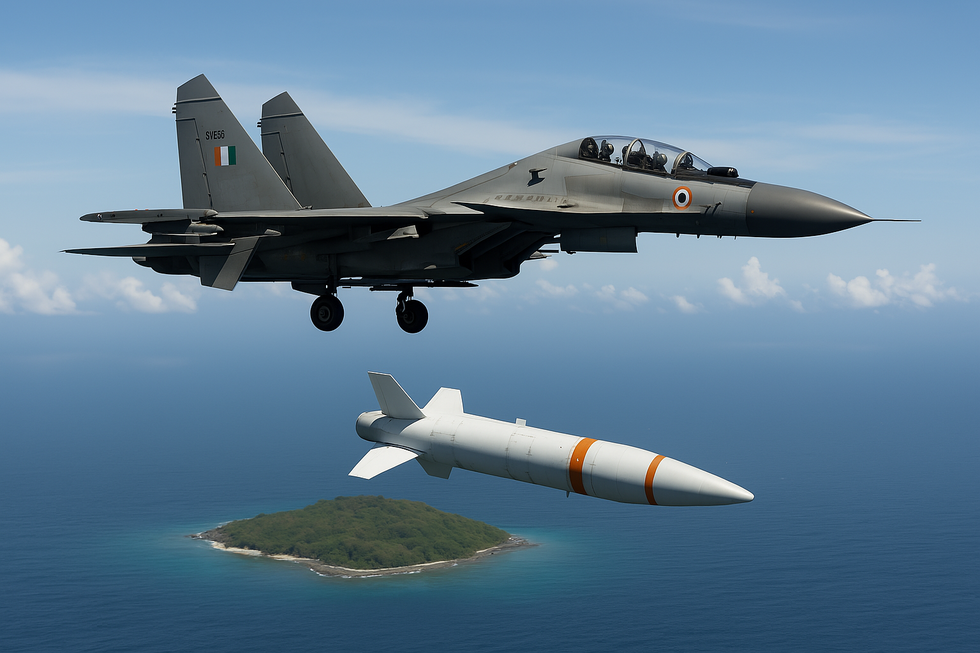




Disclaimer: Copyright infringement not intended.
Recently the Ministry of External Affairs dismissed a U.S. media report that alleged Hindustan Aeronautics Limited supplied British sourced items to Russia as factually incorrect and misleading.
The MEA highlighted India’s robust legal and regulatory framework on strategic trade that governs overseas commercial activities of Indian companies.
This comes amidst a backdrop of rising global scrutiny on defence trade especially following the Russia Ukraine conflict of 2022 and the Gaza crisis.
The primary objective of India’s export controls is to
Handbook on Strategic Trade Control Systems
Issued by the Directorate General of Foreign Trade under the Ministry of Commerce and Industry.
Maintains a harmonised list of dual-use and military items including software and technologies.
These items have both civilian/industrial and military/WMD applications.
Items are regulated through Export Authorisation / Licence unless specifically exempted or prohibited.
SCOMET List
India regulates exports via the SCOMET (Special Chemicals, Organisms, Materials, Equipment and Technologies) list.
Category 6 covers the Munitions List which requires clearance from the Department of Defence Production.
India is a signatory/member of major disarmament and export control regimes.
|
Treaty/Regime |
Area of Control |
|
Chemical Weapons Convention (CWC) |
Chemical weapons and related precursors |
|
Biological Weapons Convention (BWC) |
Biological agents and toxins |
|
Missile Technology Control Regime |
Delivery systems for WMDs |
|
Wassenaar Arrangement |
Conventional arms and dual-use goods/tech |
|
Australia Group |
Chemical and biological weapons |
India follows a non-aligned policy in global conflicts.
Declined Israel’s request for artillery shells during Gaza offensive.
Has not supplied kinetic weapons to either Russia or Ukraine post-2022 war.
This enhances India's global image as a responsible exporter.
PSU Driven Export Platforms
Dornier 228 aircraft
155 mm Advanced Towed Artillery Gun
BrahMos & Akash Missiles
Radar Simulators, Pinaka Rockets
India now exports to over 100 countries.
Increasing participation of Indian private defence firms in manufacturing and exports diversifying the export base.
Regulatory Simplification
Defence Products List rationalised – most parts/components don’t need industrial licence.
Introduction of Defence Production and Export Promotion Policy.
Streamlining Procedures
Standard Operating Procedures updated.
Export Promotion Cell established.
Geographical zones allocated to DPSUs for targeted marketing.
Digital Reforms
End-to-end online portal for export authorisation applications:
Digital submission, signing and approval.
Faster turnaround time, transparency and accountability.
Delegation and Flexibility
2018: DDP designated as the nodal agency for export licences of small arms/ammunition parts.
Government-signed End User Certificate waived for Wassenaar Arrangement countries for engineering services.
Open General Export Licence
Pre-approved, blanket licence for specific items to specified countries.
Eliminates case-by-case authorisation, reduces red tape and encourages exporters.
|
Indicator |
Value |
|
Defence Export (FY 2024-25) |
₹23,622 crore (12.04% increase YoY) |
|
Export Target (by 2029) |
₹50,000 crore |
Sources:
|
PRACTICE QUESTION Q. Discuss the objectives and significance of India’s strategic trade control system in the context of increasing defence exports and global non-proliferation commitments. 250 Words. |











© 2025 iasgyan. All right reserved